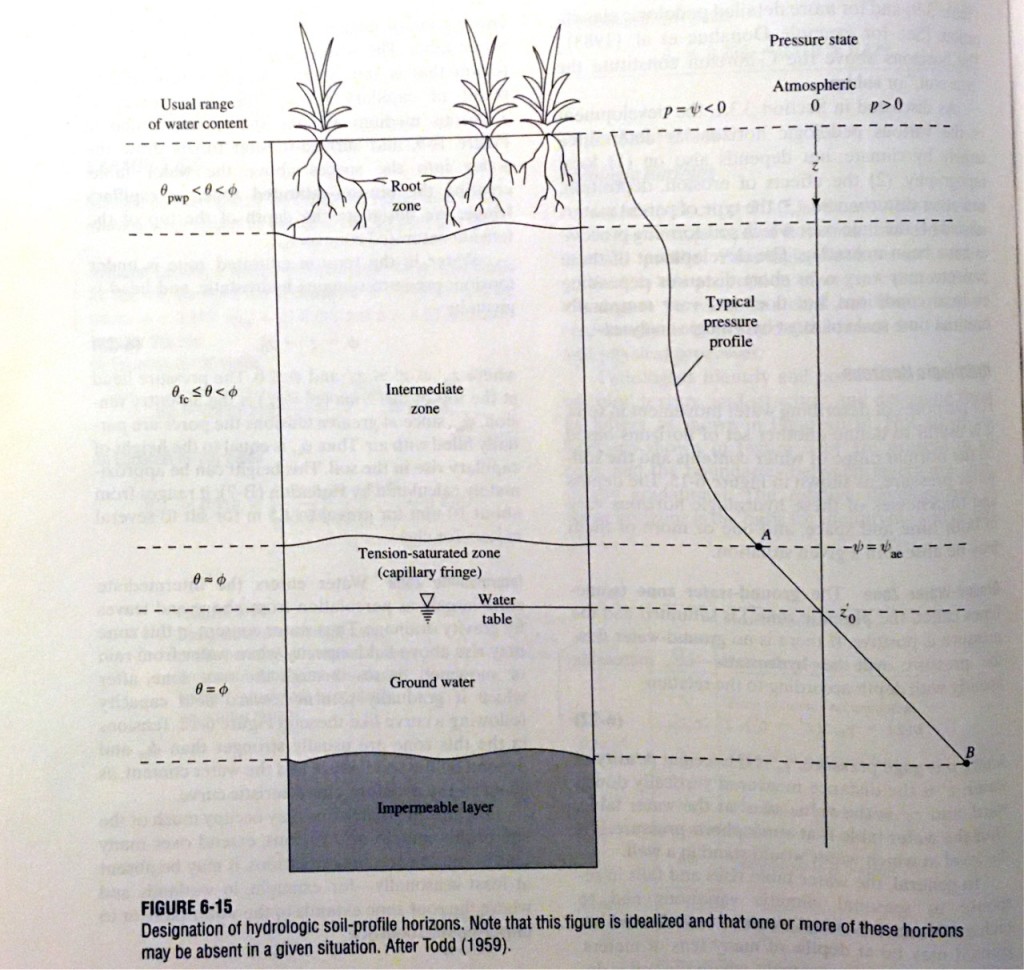In my Watershed Hydrology class, we’ve been talking about soil moisture and water potential in relation to evaporation and infiltration. An important concept is the idea of the unsaturated zone, where the pores (or open spaces) in the soil, sediment or rock are not completely filled with water most of the time. In class, I went over a diagram of the unsaturated zone and talked about the capillary fringe. I found the figure below to be quite useful in summarizing the different parts of the unsaturated zone and how wet those parts usually are. Take a look at the figure now, and then I’ll define the relevant terms below the image.

On the left, there is the usual range of water content, where water content is noted with θ (theta). All the way down, water content is always equal to or less than porosity (φ, phi). In the rooting zone, where both infiltration and evapotranspiration occur, water content is usually someplace above θpwp, where pwp stands for the wilting point. Below the rooting zone, there isn’t much effect from evapotranspiration, so water content tends to stay at or above θfc, the field capacity, which is when drainage due to gravity stops. Below the water table, you find the saturated zone, where water content is equal to porosity (φ, phi), by definition. Just above the saturated zone is the weird world of the capillary fringe. Here too water content is approximately equal to porosity, because water is drawn up into this zone by capillary effects (just like a sponge gets wet higher than level of the water when it is placed in a pool of water).
On the right side of the diagram, you can see the water potential, in this case expressed as pressure. All the way down to the water table, potential is negative and in the form of matric potential (ψ, psi). Remember, matric potential is always negative, and represents the tension being exerted on the water in the pores. At the water table, matric potential is zero and pressure potential is zero. Below the water table, matric potential goes away and pressure potential is positive, caused by the weight of the overlying water. One last point is that the top of the capillary fringe is where the matric potential, ψ, is equal to the air entry tension (ψae). That’s the point at which a significant amount air starts to occur in the pores, when then starts to change how easily water moves through them.
Want it drawn out for you again? The video below is a great explanation of the unsaturated zone (sometimes called the vadose zone) and related concepts.



Comments (1)